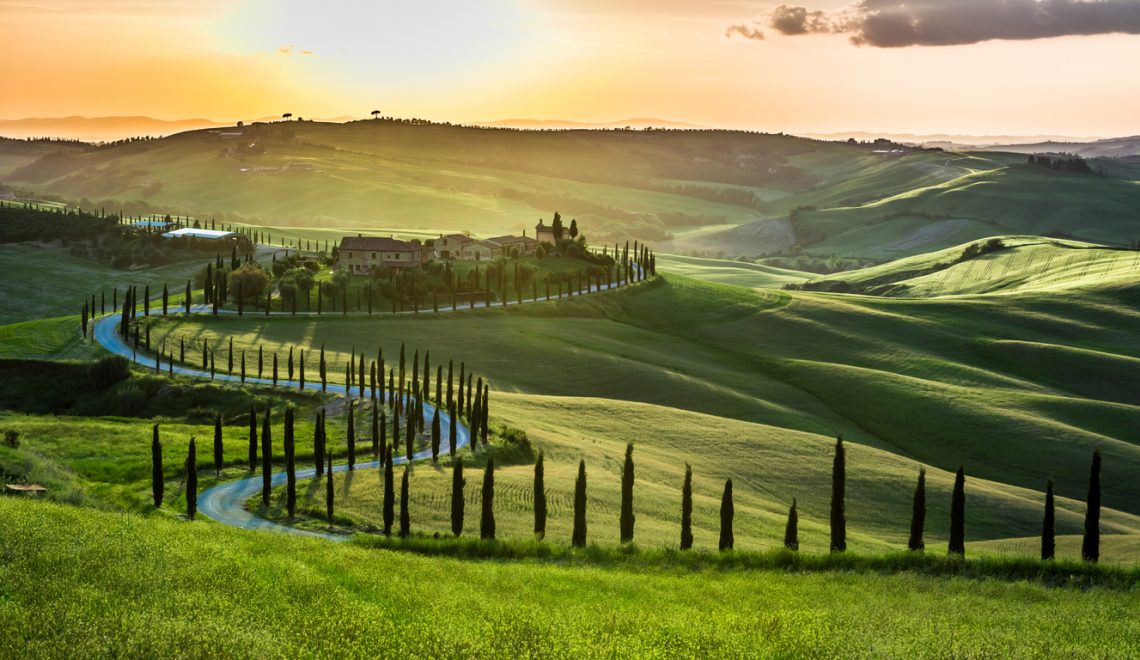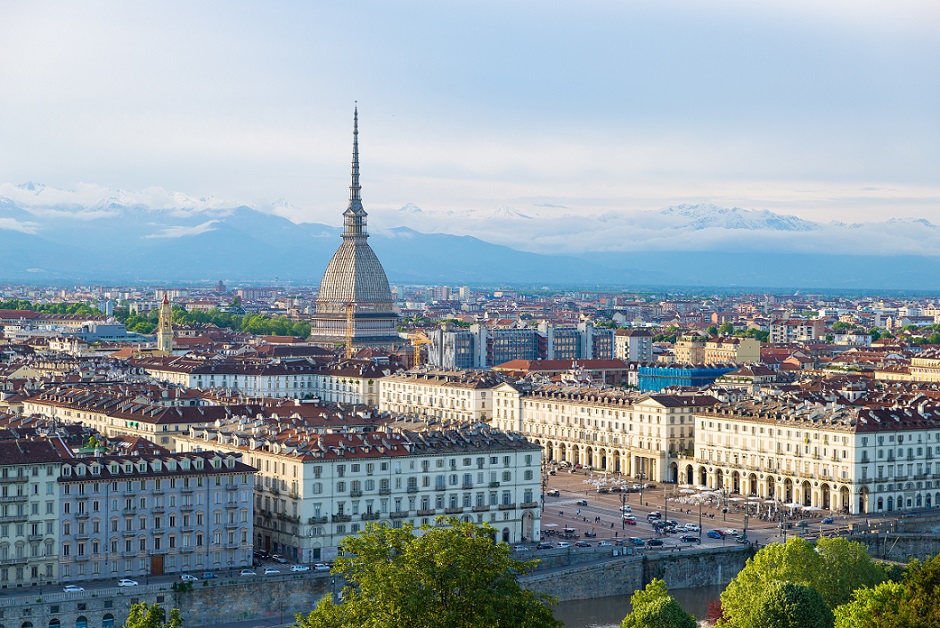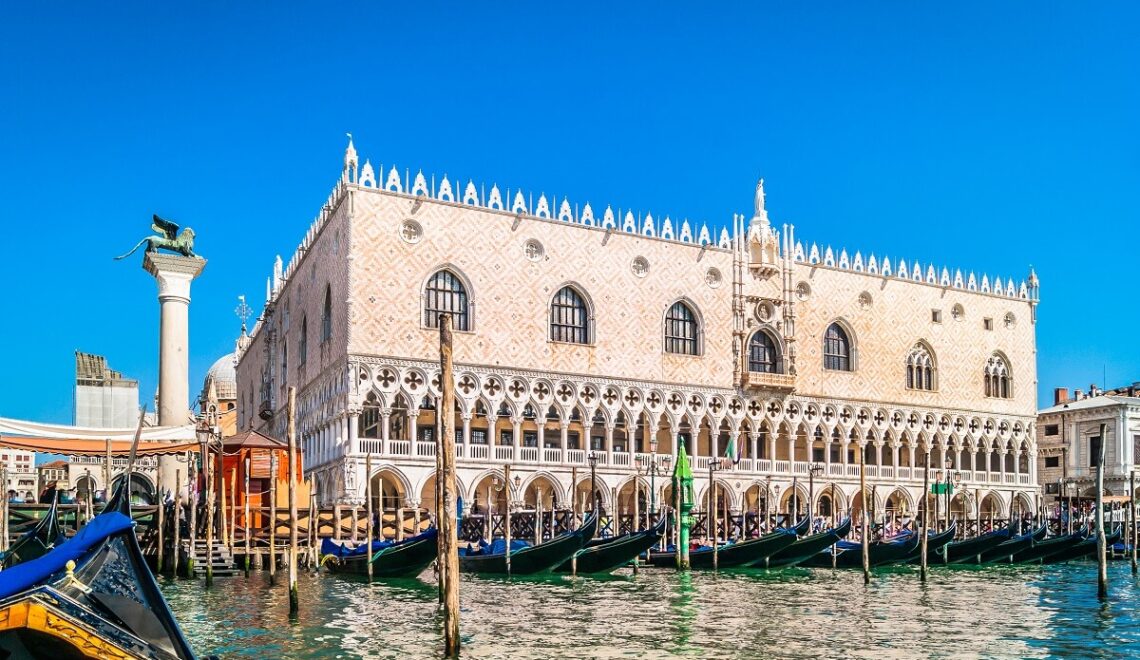
With this guide you will discover where the painting is located and all the interesting facts about The Birth of Venus. Discover the symbolism and legend behind Botticelli’s painting.
In the campaign regarding Italian beauty launched by the Ministry of Tourism there is an image of Botticelli’s Venus. With this guide you will find out where the work is and all the curiosities about The Birth of Venus.
The Ministry of Tourism launched a campaign for the beauty of Italy and chose an image of Botticelli’s Venus as its “influencer”. If you want to see the real Botticelli’s Venus, set out with Italo for a weekend in Florence and find out what to see in the Tuscan capital. During your stay in the cradle of Italian art, check out our suggestions about the city’s most famous spots panoramic views.
Here’s more about Botticelli’s Venus and where to admire the work:
- Where is The Birth of Venus located?
- Who painted the Birth of Venus?
- What Is Unusual About Botticelli’s Birth Of Venus
- Who was Botticelli’s Venus?
- The Meaning Of The Birth Of Venus
- The Story Of The Birth Of Venus
- How Does The Birth Of Venus Represent The Renaissance
- How Many Venuses By Botticelli Are There in The World?
- Travel to Florence with Italo
1. Where is The Birth of Venus located?

The Birth of Venus is at the Uffizi Gallery in Florence, less than a 15-minute walk from the main station of Santa Maria Novella. The Uffizi Gallery is in the center of the city, close to “Ponte Vecchio” and “Palazzo della Signoria.”
The Birth of Venus has been in the Uffizi since 1815, though before that it was located at Villa di Castello, the country residence of the Medici family. Subsequently the painting was transferred to Palazzo Pitti, to later be permanently housed in the Uffizi.
The Uffizi Gallery, a museum commissioned and built by Francesco I de’ Medici in 1581, is located in the beautiful palace built between 1560 and 1580 following a design by Giorgio Vasari. It is one of the most famous museums in the world because inside you can admire collections of ancient sculptures and paintings from the Middle Ages to the modern age. There are collections of paintings from the fourteenth century and the Renaissance. You can find works by Giotto, Simone Martini, Piero della Francesca, Beato Angelico, Filippo Lippi, Botticelli, Mantegna, Correggio, Leonardo, Raphael, Michelangelo, Caravaggio and masterpieces of German, Dutch and Flemish painters.
Don’t miss the collection of ancient statues and busts from the de’ Medici family that line the corridors of the Gallery and include ancient Roman sculptures as well as copies of Greek originals.
- The Uffizi Gallery is open Tuesday through Sunday, from 8:15 to 18:30.
- The cost of the ticket is €25, for more information on costs, tickets, and concessions, visit the https://www.uffizi.it/en/ website.
2. Who painted the Birth of Venus?
The work of art, the Birth of Venus was painted by Sandro Botticelli. It took two years, from 1483 to 1485, to complete. The painting was commissioned by Lorenzo di Pierfrancesco de’ Medici, cousin of Lorenzo the Magnificent, who also commissioned La Primavera from Botticelli in 1482.

Spring by Sandro Botticelli
3. What Is Unusual About Botticelli’s Birth Of Venus?
The Birth of Venus, unlike Spring painted on a poplar panel, was painted on canvas, a technique little practiced in Florence in those years. The technique used was based on the use of diluted egg yolk, which gives the painting a kind of transparency, reminiscent of the characteristics of frescoes.
Botticelli had learnt the technique while staying outside Tuscany.
The work has a symmetrical arrangement of the figures, in the center Venus on a shell, on the left the two winds Zephyr and Aura and on the right the Hour of Spring.
In the figure of Venus, static coexistence is displayed with the upright posture and movement is displayed by the windblown hair.
4. Who Was Botticelli’s Venus?
The model portrayed by Sandro Botticelli as Venus was Simonetta Cattaneo Vespucci, a beautiful noblewoman originally from Genoa with golden hair, to whom Botticelli was very attached to.
The young woman became known to the Medici family and many of them fell in love with her, from Giuliano, the brother of Lorenzo the Magnificent, to Sandro Botticelli. The model who was represented in many other paintings, unfortunately died very young, almost ten years before the creation of Botticelli’s The Birth of Venus and Spring. The artist was so in love with Simonetta that even after her untimely death her beauty was imprinted in the painter’s mind, and he drew her from memory to honor her. For this reason, Botticelli’s Venus is a moving symbol of beauty and love.
5. The Meaning Of The Birth Of Venus

The Birth of Venus, Sandro Botticelli
The Birth of Venus by Botticelli, together with La Primavera, is one of the most important profane allegories of the Renaissance in Florence of Lorenzo the Magnificent and expresses the concept of love according to Neoplatonic philosophy.
Botticelli’s Venus represents an ideal of beauty and perfection, which through the representation of the body and the proportion of each element becomes the best example of the harmony of Creation.
Botticelli represents the goddess Venus as demure, covering her breasts and pubis with her hands with her blond hair flowing freely, while the two winds Aura and Zefiro in human form fly intertwined, pushing her to the shore with their breath where there is a girl with a cloak waiting to cover her.
In this painting you can admire, in addition to the splendid Venus in the shell, the cornflowers that decorate the dress of the girl who awaits Venus on the beach, the red cloak that she offers to the goddess decorated with primroses and sprigs of myrtle, the rain of roses that falls from the sky, the sea waves and the blue anemone on the beach near the feet of the waiting girl, Spring Time. The Hours, daughters of Zeus and Temi, in the mythological tradition are the goddesses who regulate the change of seasons.
6. The Story Of The Birth Of Venus
The birth of Venus, a captivating myth that has inspired artists and poets throughout the ages, finds one of its most celebrated depictions in Sandro Botticelli’s masterpiece. According to ancient Roman mythology, Venus, the goddess of love and beauty, emerged from the sea as a fully grown woman. Her birth was the consequence of a dramatic saga involving the gods: it is said that after Saturn (Cronus in Greek mythology) castrated his father Uranus (the sky), he threw the severed genitals into the ocean. From the foam (aphros in Greek) that formed around them, Venus (or Aphrodite, as she was known in Greek mythology) arose, carried by a shell to the shores of Cyprus or Cythera.
This story symbolizes the union of heaven and earth, and the emergence of beauty from chaos. Venus’ birth, transcending the conventional modes of creation, illustrates her role as a symbol of harmony, love, and regeneration, embodying the natural order’s power to bring forth life and beauty from turmoil.
7. How Does The Birth Of Venus Represent The Renaissance
The Birth of Venus by Sandro Botticelli is an iconic representation of the Italian Renaissance, a period marked by a rebirth of interest in the classical art and literature of ancient Greece and Rome. This painting embodies the Renaissance spirit through its revival of mythological themes and its innovative use of perspective and anatomical accuracy, reflecting the era’s quest for knowledge and beauty. The depiction of Venus, the goddess of love, emerging from the sea, symbolizes the rebirth of culture and intellect that characterized the Renaissance. Botticelli’s work, with its emphasis on humanism, the study of classical texts, and the exploration of the human form, illustrates the period’s break from the medieval past and its journey towards enlightenment and rediscovery of the classical ideals. The Birth of Venus, therefore, not only captures the mythological origins of Venus but also serves as a metaphor for the cultural and intellectual awakening that was sweeping across Europe, marking a new chapter in the history of Western art and thought.
8. How many Venuses by Botticelli are there in the world?
There is not just one, but three other Botticelli’s Venus made by the artist in collaboration with his workshop. The first can be found in Turin, the second is kept in the Gamäldegalerie in Berlin and the third belongs to a private Swiss collection.
9. Travel to Florence with Italo

It’s so easy with Italo to spend a family weekend in Florence, visit the Uffizi and admire the splendid Venus by Botticelli. Italo has daily, high speed trains in route to the Florence Santa Maria Novella station from all over Italy: check out all the timetables and ticket prices on our site and takes advantage of the special offers dedicated to families.
Remember to always log in to your account before purchasing to take advantage of the Italo Più offers and rates for members only. If you haven’t already done so, you can register for free for the Italo Più Loyalty Program and immediately get a 5% discount on your first trip and accumulate points on consecutive trips to earn free reward tickets.




